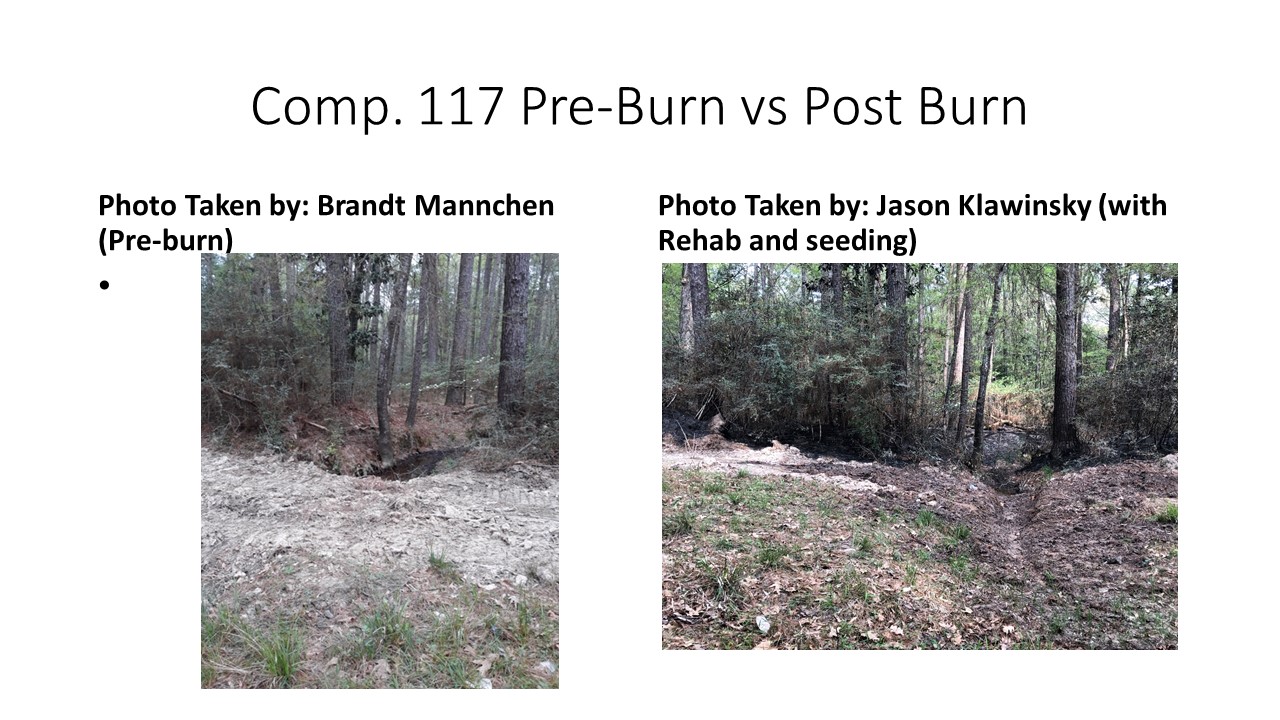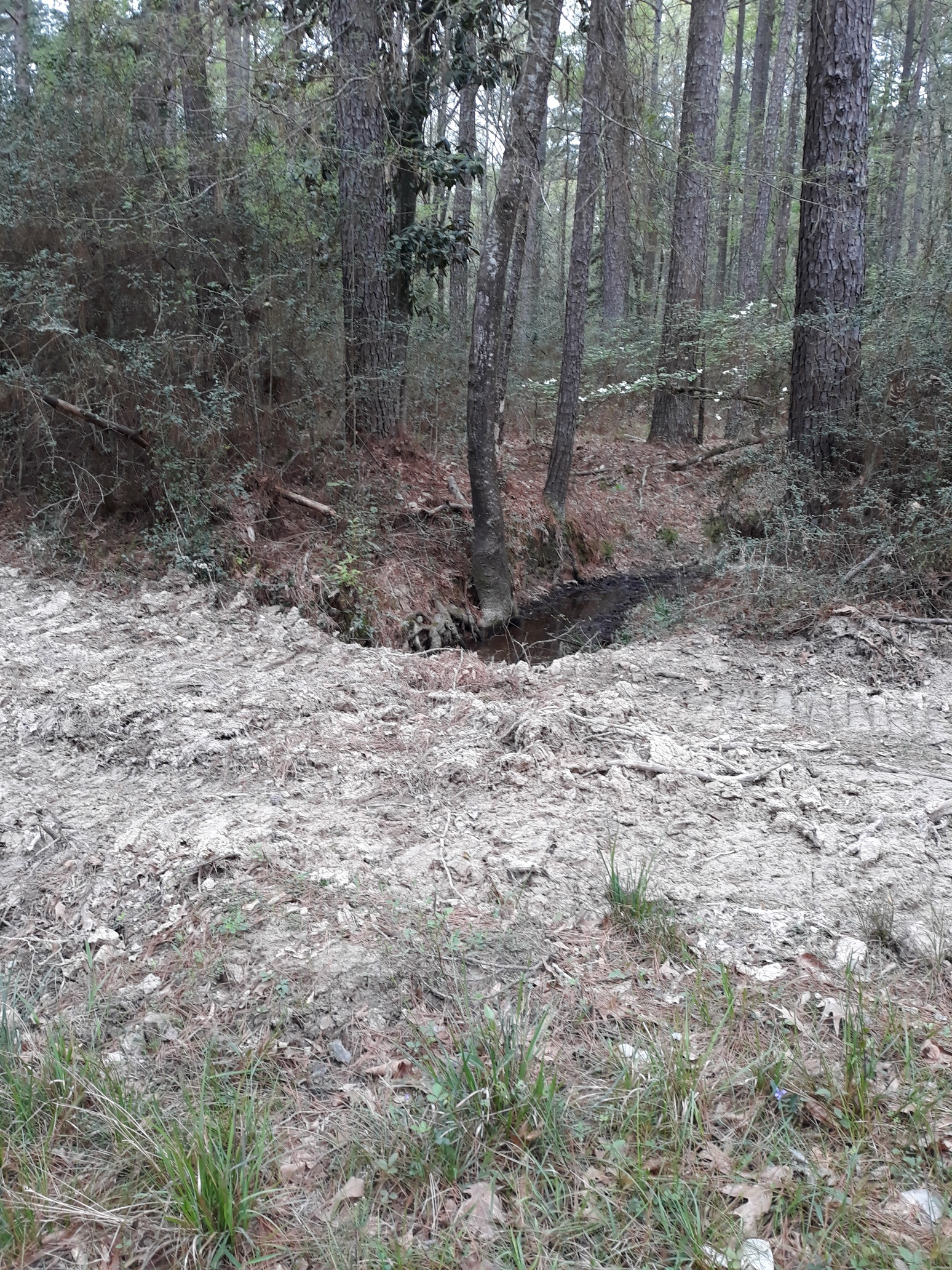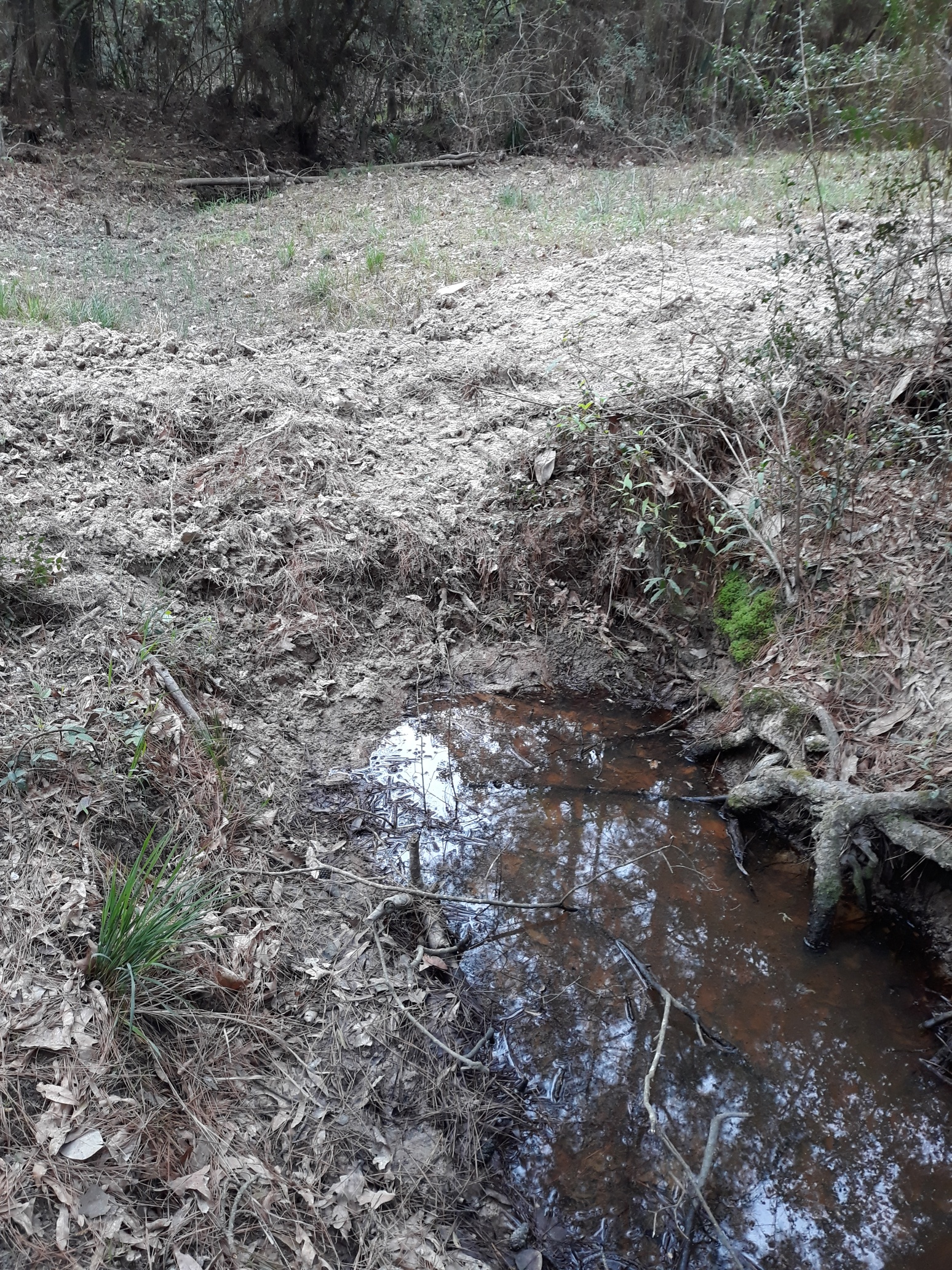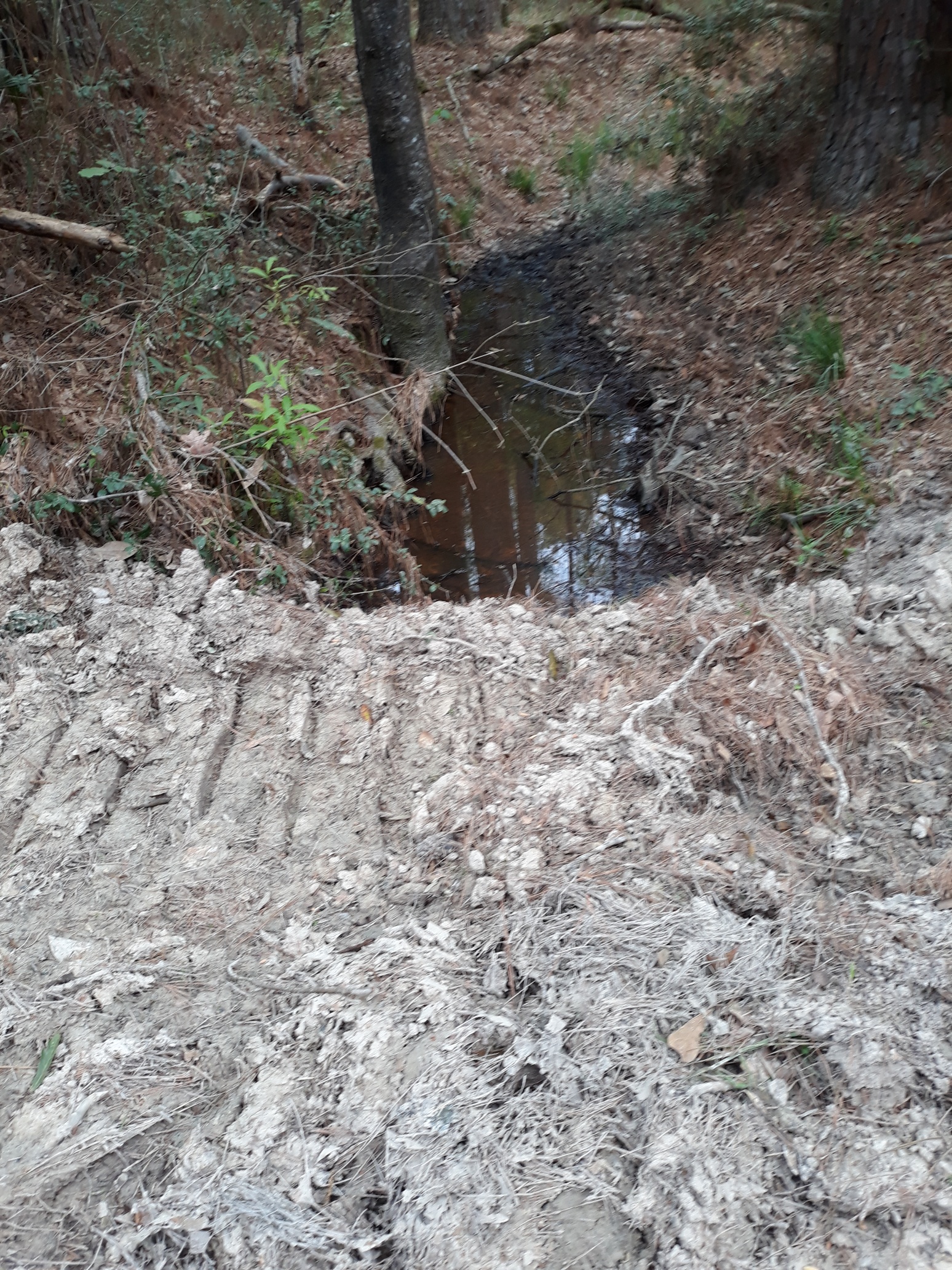The Houston Sierra Club (HSC) has a relationship of respect with the U.S. Forest Service (FS) for management of Sam Houston National Forest (SHNF). On March 13, 2020, a representative of the HSC visited Compartment 117 (C 117, 1,015 acres) on the east side of SHNF. The visit was to observe C 117 and relay information to the FS about what was observed.
The HSC representative hiked Forest Roads (FR) 259A and 259 and periodically walked from these roads to look at the forest. That person also walked along a small stream and pipeline right-of-way (ROW) to view more of C 117.

The HSC found in Stand 6 (a stand is a group of trees with similar characteristics), a 58 acre forest of Bottomland Hardwood – Loblolly Pine, where a fire lane had been bulldozed on a pipeline ROW and part of a stream had been filled which empties into Winters Bayou.
 The entire stream was blocked from flowing with dirt so that water quality, riparian (streamside), and aquatic values were degraded.
The entire stream was blocked from flowing with dirt so that water quality, riparian (streamside), and aquatic values were degraded.
Along this stream’s banks there are American Hornbeam, Inland Sea Oats, Swamp Chestnut Oak, White Oak, Southern Magnolia, Sweetleaf, Sebastian Bush, Flowering Dogwood, American Holly, Winged Elm, Texas Swamp Red Oak, Dwarf Palmetto, Loblolly Pine, Sweetgum, American Beautyberry, Yaupon Holly, Partridge Berry (blooming), Virginia Creeper, Water Oak, Red Maple, Black Gum, and Swamp Laurel Oak. 
The HSC contacted the FS District Ranger via email and talked with him via phone about this problem. The District Ranger visited the site with his fire program manager.
The next day, the FS removed the blockage from the stream so that it connected and flowed again. The HSC revisited C 117 on March 31, 2020 and observed the rehabilitated stream. The HSC appreciates that the FS took care of this problem promptly.
The HSC told the FS that it wants to meet (once the coronavirus pandemic is over) to find a permanent solution that implements best management practices (BMPs) for fire lane construction and protects water quality, riparian, and aquatic values. The HSC also reported that:
1. A culvert has blown-out on FR 259 and the road has collapsed.
2. Several downed trees are on FR 259.
3. The non-native invasive plant species, Chinese Tallow, was found on FR 259.
4. Carolina Rockrose, Helianthemum carolinianum, was blooming in several places in C 117. The HSC has not seen this fire tolerant plant often in SHNF and was delighted to find it growing in C 117.
5. The HSC saw many areas where feral hogs rooted extensively. The HSC urged the FS to implement a control program to reduce feral hogs.
6. The HSC saw extensive Hardwood and Pine Flatwoods vegetative communities in the western part of C 117, south of FR 259A and 259.
 The HSC will continue its citizens’ oversight activities, called “Forest Watch”, and will work with the FS to ensure that SHNF is protected and managed appropriately.
The HSC will continue its citizens’ oversight activities, called “Forest Watch”, and will work with the FS to ensure that SHNF is protected and managed appropriately.
By Brandt Mannchen, April 2, 2020